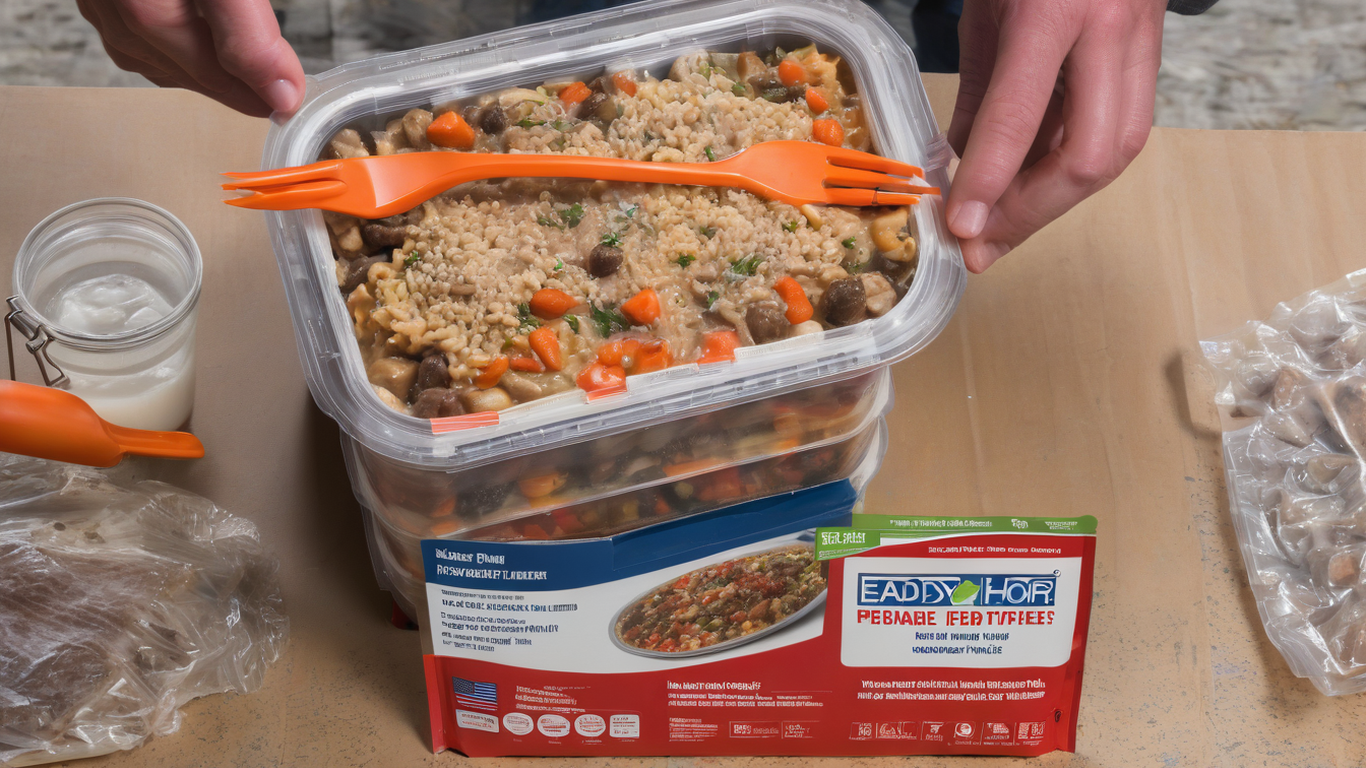What are 10 items in a survival kit – Essential Elements for Emergencies
Imagine being stranded in the wilderness or facing a natural disaster without the necessary tools to survive. That’s where a well-stocked survival kit becomes a lifeline.
A survival kit is more than just a collection of random items; it’s an assembly of carefully selected tools and resources that could mean the difference between life and death. Whether you’re an adventurer, an outdoor enthusiast, or just someone who values preparedness, understanding the essential items for a survival kit is key.
In the following sections, we will delve into the ten indispensable items that should be in every survival kit. These items are not just for immediate survival, but also for ensuring your comfort and safety in the long run. Stay tuned as we unravel the mystery behind each item, their uses, and how they can save your life in dire situations. You’re in the right place to master the art of survival.
What is a survival kit?
A survival kit is a package of basic tools and supplies prepared in advance as an aid to survival in an emergency. It typically includes items that are essential for maintaining basic human needs when utilities and core services have been cut off. These kits are often designed to sustain an individual for at least 72 hours.
The first item in a survival kit is typically a water purifier or water purification tablets, as clean drinking water is a fundamental need for survival. The second is a first-aid kit, which is crucial for treating injuries. A multi-tool, which might include a knife, can opener, and various other tools, is also an essential part of a survival kit.
Food is another key component. This might include canned goods, protein bars, or freeze-dried meals. A fire starter is also essential for warmth and cooking. Other items might include a flashlight, a radio for receiving news updates, a whistle for signaling for help, and a space blanket for warmth.
Finally, a local map can be extremely useful in a survival situation, particularly if you need to evacuate the area. Remember, a survival kit is not a one-size-fits-all solution. It should be customized based on personal needs and the potential disasters in your area.
Why is a survival kit important?
Survival kits are crucial for ensuring your safety and well-being in unexpected situations. They provide essential items that can mean the difference between life and death when you’re stranded or in danger. For instance, a first aid kit is a primary component of any survival kit. It can help treat injuries and prevent infections, making it indispensable during emergencies.
Another important item is a water purifier. Access to clean drinking water is crucial for survival. A water purifier can help you obtain safe water from any source, reducing the risk of waterborne diseases. Similarly, having a fire starter can provide warmth, cook food, and signal for help.
High-energy, non-perishable food items are also essential in survival situations. They provide the necessary energy to keep you going until help arrives. A flashlight and extra batteries are also vital, providing light in the dark and helping you navigate your surroundings.
A multi-tool is another significant item in a survival kit. It can perform various tasks, such as opening cans, cutting ropes, or even acting as a makeshift screwdriver. Additionally, a compass and a map can guide you in the right direction if you’re lost.
Emergency blankets can help retain body heat and protect you from harsh weather conditions. Finally, a whistle is a simple but effective tool for signaling help.
In essence, a survival kit is a lifeline. It equips you with the necessary tools to endure and navigate through unpredictable scenarios, highlighting its importance in every aspect of life.
What are essential items in a survival kit?
To ensure safety during emergencies, it’s crucial to have a well-equipped survival kit. The first item on the list is a first aid kit. This should include bandages, antiseptic wipes, tweezers, medical tape, and pain relievers. Next, a multi-tool is indispensable. It often has a knife, can opener, screwdriver, and more, all in one compact device.
Thirdly, consider including a water purification system. This could be purification tablets or a life straw. Another critical item is non-perishable food. Energy bars and canned goods are excellent choices. A fire starter, such as matches or a lighter, is also vital for warmth and cooking.
The sixth item is a flashlight with extra batteries. It can be invaluable when night falls or in low-light conditions. A whistle is also essential. It can signal for help in situations where shouting won’t suffice.
Next, a local map and compass are crucial for navigation, especially in unfamiliar terrains. The ninth item is a portable charger for your phone or other essential electronics. Lastly, don’t forget a blanket. It can provide warmth and double as a shelter if needed.
Remember, the goal of a survival kit is to keep you safe and comfortable until help arrives. So, consider your personal needs when packing your kit.
How to pack a survival kit?
Packing a survival kit requires careful consideration of essential items that can aid in your survival during emergencies. The first item on your list should be water. A portable water filter or purification tablets can ensure you have access to clean drinking water.
Next, consider food. High-calorie, non-perishable items like energy bars and canned goods are ideal. Don’t forget a manual can opener.
Shelter is crucial, so pack a lightweight tent or emergency blanket. A sleeping bag can also provide warmth and comfort.
First aid supplies are a must-have. Include bandages, antiseptic wipes, tweezers, medical tape, and pain relievers.
Fire-starting tools such as waterproof matches or a lighter are essential for warmth and cooking.
A multi-tool or Swiss army knife can serve multiple purposes, from cutting food to fixing gear.
Navigation tools like a compass and maps can help you find your way in unfamiliar terrain.
A flashlight or headlamp, preferably solar or hand-crank powered, ensures you’re not left in the dark.
Communication devices like a whistle for signaling and a solar-powered or crank radio for receiving news updates are vital.
Lastly, pack personal items like medications, copies of important documents, and cash. Remember, the key to a well-packed survival kit is to keep it lightweight and portable.
Where to store a survival kit?
Storing a survival kit requires careful consideration. The first rule of thumb is to keep it in an easily accessible location. This could be anywhere from your home, office, or vehicle. The idea is to have it within reach during an emergency. A survival kit is not just a box of tools, it’s a lifeline. It usually contains essential items like a first aid kit, water purification tablets, a flashlight, and a multi-tool.
If you have a large survival kit, you might consider storing it in a closet or under the bed. For smaller kits, a drawer or a cabinet would suffice. It’s also important to keep your survival kit in a cool, dry place to prevent damage to its contents. Moisture and heat can degrade certain items like food and medical supplies.
When storing a survival kit in your vehicle, ensure it’s in a spot where it won’t move around while driving. The glove compartment or trunk are ideal locations.
If you’re an outdoor enthusiast, you might want to store a mini survival kit in your backpack. This could include items like a compass, fire starter, and a pocket knife.
Remember, the key to effective use of a survival kit is not just having one, but also knowing where it’s stored and how to use the items in it. As the saying goes, “It’s better to have it and not need it, than to need it and not have it.”
Can survival kits be customized?
Absolutely, survival kits can be customized according to personal needs and circumstances. A basic survival kit typically includes items like a first-aid kit, a flashlight, a multi-tool, a compass, and a whistle. However, these items can be adjusted based on the specific survival scenario you’re preparing for.
For instance, if you’re planning a wilderness trip, you might want to include a fire starter, water purification tablets, and a high-quality survival knife. If you’re preparing for a potential natural disaster, you might want to add in emergency blankets, a hand-cranked radio, and additional food and water supplies.
It’s also important to consider personal factors when customizing your survival kit. If you have a medical condition, make sure to include necessary medications or medical supplies. If you wear glasses or contact lenses, an extra pair or a lens care kit could be a life-saver.
Remember, the key to a useful survival kit is not just about the number of items, but their practicality and utility in your unique situation. So, yes, survival kits can and should be customized to fit your needs.
How often should survival kits be updated?
Survival kits are essential for ensuring your safety and well-being in emergency situations. It is crucial to regularly update these kits to maintain their effectiveness. The shelf life of certain items like water purification tablets, food, and first aid supplies, which are essential components of a survival kit, may expire over time.
It is generally recommended to review your survival kit every six months. This allows you to replace any expired items, such as non-perishable food or medicines. It also provides an opportunity to update your kit based on changes in your personal situation or environment. For example, if you’ve recently moved to an area prone to earthquakes, you might want to add a dust mask to your kit.
Survival gear such as multi-tools, fire starters, or flashlights should be checked for functionality. Batteries in particular should be replaced regularly to ensure your equipment will work when you need it most.
Remember, the goal of a survival kit is to provide essential items that will keep you alive and healthy until help arrives. So, keeping your kit updated is not just a matter of convenience, but could be a matter of life and death.
In addition to physical items, it’s also important to keep any emergency contact information or important documents in your kit up-to-date. This might include copies of passports, medical records, or insurance information. By regularly updating your survival kit, you can be confident that you’re prepared for any emergency.
Are survival kits necessary for every trip?
Absolutely! No matter the duration or destination of your trip, a survival kit can be a lifesaver. It’s not just for extreme situations. A well-stocked survival kit can help you navigate minor inconveniences or life-threatening emergencies.
One of the most essential items in a survival kit is a first aid kit. It can treat injuries, prevent infections, and manage illnesses. Another crucial item is a multi-tool. This compact device can perform various tasks, from opening canned goods to cutting ropes. A fire starter is also vital. It can provide warmth, cook food, and signal for help.
Water purification tablets are a must-have. They can make unsafe water drinkable, crucial in places where clean water is scarce. Equally important is an emergency blanket. It helps maintain body temperature and could be used as a shelter.
A survival kit should also include non-perishable food items. They provide the energy needed to survive. A flashlight with extra batteries is essential for navigating in the dark. A whistle can attract attention and help rescuers locate you. A compass and a map can aid navigation, especially in unfamiliar territories.
Having these items in your survival kit can make all the difference when faced with an unexpected situation. So, are survival kits necessary for every trip? The answer is a resounding yes!
Conclusion: The Importance and Essentials of a Survival Kit
In conclusion, understanding the significance and essentials of a survival kit is crucial for everyone. A survival kit is a critical resource in emergency situations, offering life-saving tools and supplies. Its importance cannot be overstated, as it can be the difference between life and death in a crisis.
We’ve covered the essentials that should be included in a survival kit, guiding you on how to effectively pack it. The location of your survival kit is also vital, ensuring it’s easily accessible when needed. Customizing your survival kit to suit your specific needs is not only possible but highly recommended.
Regular updating of your survival kit is crucial to ensure that all items are functional and ready for use. Despite the common misconception, survival kits are not just for wilderness adventures or extreme trips. They are a necessary precaution for any journey, big or small.
Looking ahead, the evolution of technology and innovation will undoubtedly influence the items included in survival kits, making them more efficient and effective. So, stay informed about these developments. Remember, the key to survival is not just having a kit, but knowing how to use it. Stay prepared, stay safe.









